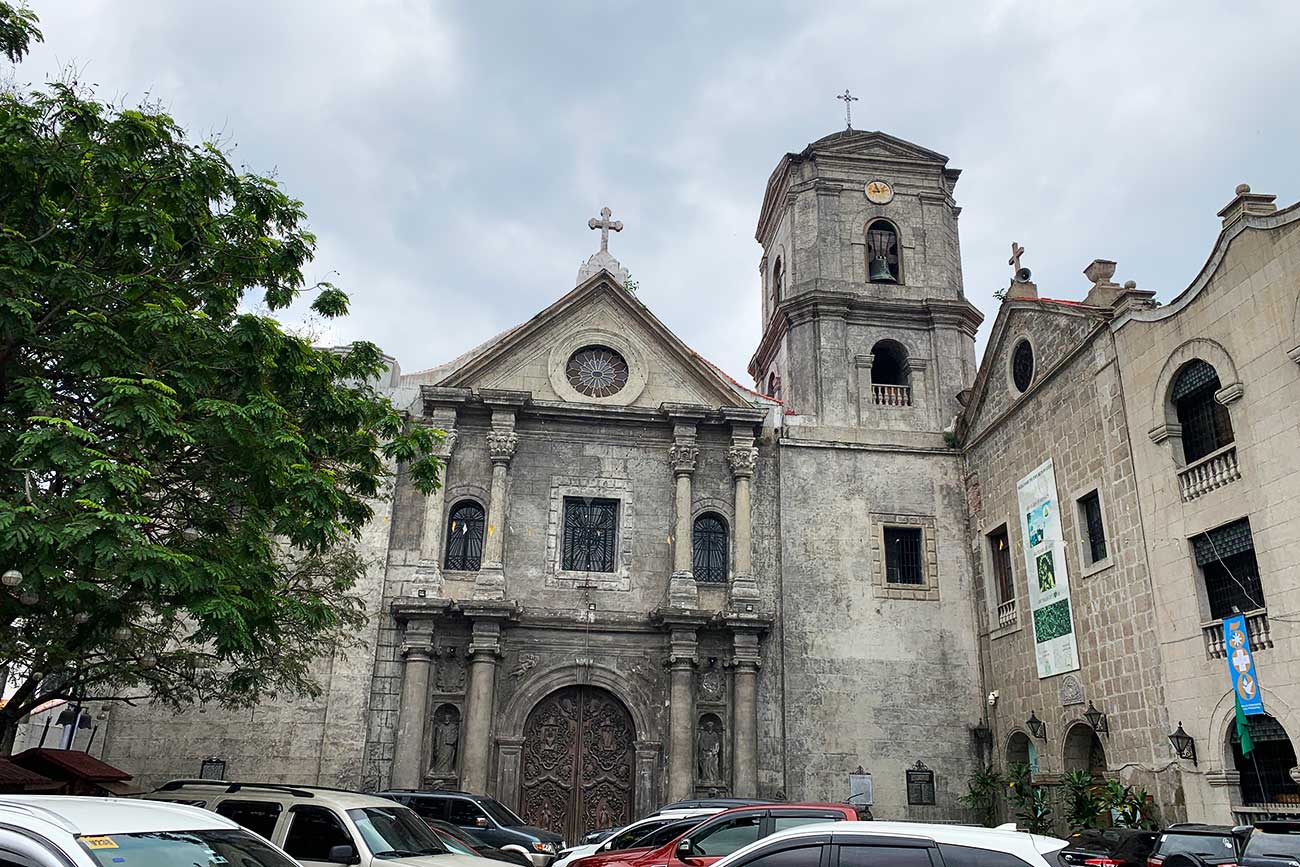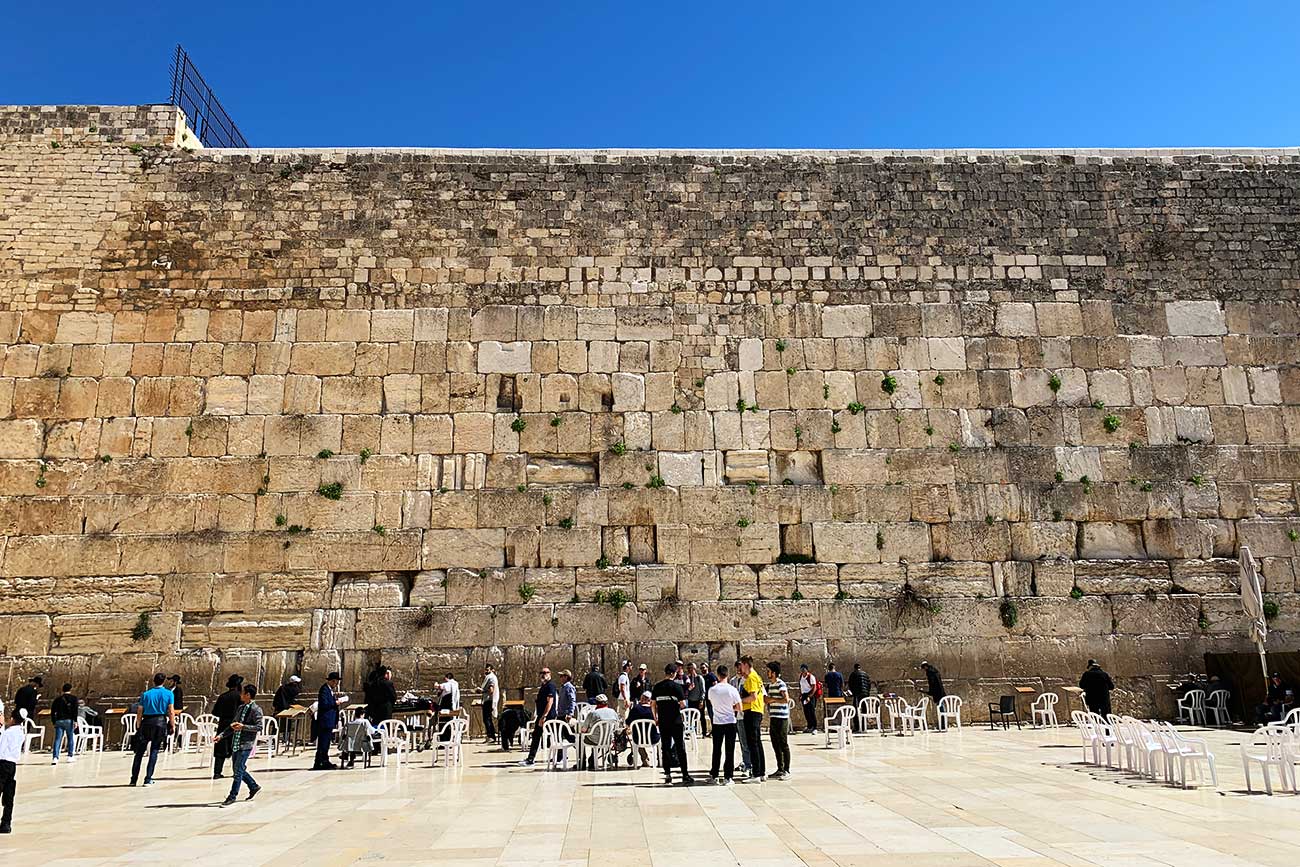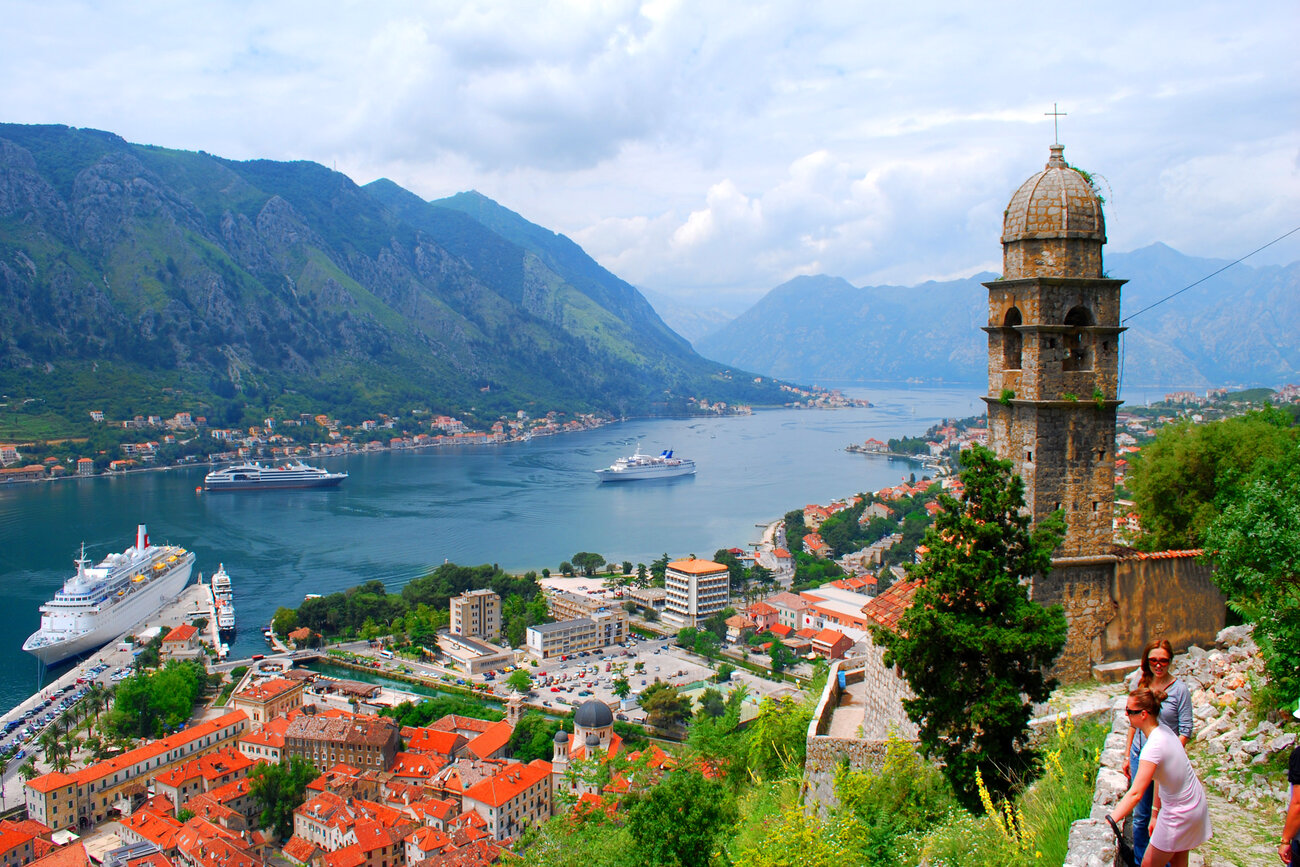To be bestowed the titles “Oldest” and “Only” are certainly great honors — especially if they’re given for two completely different reasons. Take Manila’s stately San Agustin Church, for example. Built way back in the late 1500s to early 1600s, it is the oldest standing church in the whole nation. It is also the only Intramuros church that survived the horrendous Battle of Manila during World War II, whose endless bombings decimated six others. After time and disaster did their number, San Agustin Church was left not only standing, but thriving — today, it is still one of the most active churches in the capital.
I first visited the church last 2011, and its timeless beauty had stuck with me ever since. The muted gray color of the huge facade (a recent addition after the 2013 renovation) belies a rich, ornate, and captivating interior that still embodies the beauty and richness of the Manila of old.
For this post, I’m taking you on a tour through the church and see what it has for tourists to explore and for the faithful to immerse.
Getting to Intramuros Church or San Agustin Church
San Agustin Church is located inside Intramuros, the historic, oldest and walled district of Manila. So this means that you have to get to Intramuros first before finding your way in to the church.
From Central Terminal LRT Station, walk towards the Manila City Hall where you will find a pedestrian underpass that takes you across Padre de Burgos Street. On exiting the underpass, you will arrive Victoria Street. Just follow the street as it curves right through the walls. Inside Intramuros, just follow Victoria Street and turn right at Gen. Luna Street. At the corner of Real Street, turn left and few meters away, you’ll arrive San Agustin Church.
Alternately, from Carriedo LRT Station, walk towards Sta. Cruz Church where you’ll find jeepneys plying the Pier route. Tell the jeepney driver to drop you off in front of Manila Cathedral. From the Manila Cathedral, walk along Gen. Luna Street and turn right on reaching Real Street.
There are several other ways to get to San Agustin Church but the most convenient one is to hire a taxi and you’ll be dropped off right in front of San Agustin Church.
History of San Agustin Church
Carved By The Years
According to historians, the current church is the third such structure, erected after the first two were brought down both by fire. It is located in Intramuros’ General Luna Street, and its predecessor was actually the first religious structure the Spaniards erected in Luzon. The current church was built from adobe stones coming out of Bulacan and Rizal. These durable rocks gave the church its famed longevity. When it was completed, the church was originally named “St. Paul of Manila”.
But the church was not alone during its third construction. Then, the Augustinians thought of constructing a monastery right beside the church. This monastery took hits during the war and was destroyed, to be re-erected as the museum that houses some of the church’s related relics.
But if the war left the church otherwise physically unharmed, it had been emotionally scarred by the horrors of human atrocities. The Japanese turned it into a concentration camp when they took a stand in Manila, and many hostages — both residents and clergy — were killed within its walls. Have you heard of the alleged ghost stories surrounding the church and its adjacent crypt? Judging by these stories, that restless spirits frequent the beautiful church would not be so far-fetched!
What To See At San Agustin Church
A Walk Through San Agustin
Along with local and international tourists, casual visitors frequent the church either to hear Mass or to attend formal functions like baptisms and weddings. But no matter how cursory your visit is, it is impossible not to be wowed by what you will see in the church. The intricate design of the interior was created to mimic some of the grandest churches built by the Augustinians in Mexico. It is said that the interiors were originally painted by Italians. Aside from the decidedly Spanish flavor of the design, Philippine and Chinese influences can also be seen. In fact, the gilded pulpit itself was patterned after the pineapple, and the carving of dogs outside in the courtyard were of the Chinese “fu” breed!
 Some of the grandest parts of the church may not be easily discerned with the naked eye. The choir seats, looking like ordinary solid wood, are actually carved from molave and inlaid with ivory. The 16 huge chandeliers were all sourced from Paris, and the 3D explosion of color in the ceiling were done in the difficult Trompe-l’œil (optical illusion) style!
Some of the grandest parts of the church may not be easily discerned with the naked eye. The choir seats, looking like ordinary solid wood, are actually carved from molave and inlaid with ivory. The 16 huge chandeliers were all sourced from Paris, and the 3D explosion of color in the ceiling were done in the difficult Trompe-l’œil (optical illusion) style!
Looking at the sheer size of the church, and appreciating the level of detail its creators had put into it, and you will easily understand why this church is one of the only four churches to be declared UNESCO World Heritage Sites in 1993. The church had weathered war, earthquake, and time, and still stands to deliver its message even in our generation.
Must Visit in San Agustin Church
But a trip to the church would not be complete without seeing the museum. For a fee of around a hundred pesos, you can view some of the oldest artifacts of Intramuros itself. You will enter through the “Sala Recibidor” (Receiving Hall) which contains priceless, elegant ivory carvings and jeweled items made by the craftsmen of old. Augustinian paintings are also on display, along with all manners of religious items. In fact, there are even carriages used for processions way back in the olden times!
Then, there’s the “Sala de la Capitulación” (Hall of Surrender), which was so named since the surrender of the Spanish forces to the Americans were negotiated here. Aside from the history of the place, you will also see more church artifacts, leading into the Sacristy that contains various (and mostly non-religious) relics. There are drawers, doors, and different kinds of furniture!
And further on, you will find the famed, allegedly haunted crypt. It was originally a dining hall, but was eventually converted to its present purpose. The hundred or so victims of the Japanese retreat are commemorated here. There are also famous personalities entombed here, among them Juan Luna, Antonio Luna, Pardo de Taveras, and Teodoro Agoncillo. Officially, the crypt is called the “Sala de Profundis” (Hall of the Depths).
The last stop in the museum visit would the the choir loft and the old library, both located in the second floor. The way leading up is paved by finely-cut stones, and the choir loft plays host to an ancient (and functional) pipe organ.
The museum is open from 8AM to 6PM, with an hour-long lunch break between 12NN and 1PM.

The San Agustin Church may be bustling with activity almost all days of the year, but if you’re lucky you can visit it when there are a few others around. Take a moment to breathe in the magnificence and marvel at the work of art that is the whole structure. In a world that has been consumed by fleeting cares, it is encouraging to think that there are places like the San Agustin that stands as an anchor in time, durable and unflinching, standing fast as a refuge for those who wish to experience a timeless moment of peace.













3 comments On San Agustin Church: An Anchor in Time
Pingback: Travel Back In Time: The Villavicencio Wedding Gift House In Taal, Batangas | The Poor Dad ()
Pingback: Hotel H2O – Experience the Best of the Hotel’s Aquatic-Themed Rooms and Amenities | The Poor Dad ()
Pingback: Exploring Montevideo | The Poor Dad ()